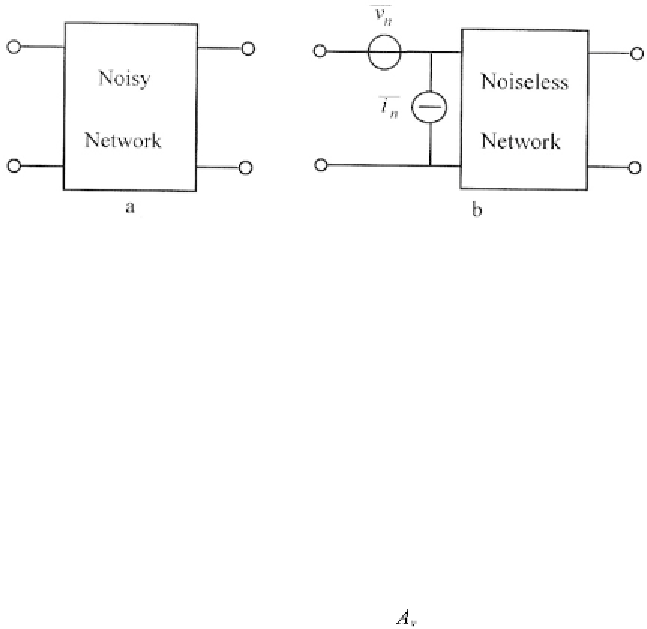Environmental Engineering Reference
In-Depth Information
neglected, otherwise it is simpler to return to the original network with
internal noise sources. If correlation is neglected, the noise model simplifies
to only and as illustrated in Fig. 8.1b. Note the use of generator
symbols with unspecified polarity and characterised by rms values.
Now we explain how to evaluate these two equivalent sources. To calculate
the equivalent input noise voltage, we equate the output noise of the original
network to that of the noiseless network with input-referred noise generators,
both under the condition of input shorted (thus the equivalent input noise
current is shorted to ground and can be left out). Conversely, the equivalent
input noise current can be found by equating the output noise of the two
networks with the input left open (now it is the equivalent input noise
voltage that can be left out). Note that for an
-input-port network we need,
for each port, two noise generators, and noise is adequately modeled by 2
N
generators in total.
A particular example of a two-port network is an open-loop amplifier.
Figure 82 shows a voltage amplifier, with gain and input impedance
and its associated equivalent input noise generators. An input signal source
is connected at the input-port with a noisy series resistance
N
This
contribution is modeled with the voltage generator
2
We are now interested in the evaluation of the PSD of the output noise
voltage,
due
to the combined action of the amplifier and the input
source.
By defining the system gain as the gain from the input signal source to
the output (different from the open-loop gain
2
Noise models of circuit components are briefly described in paragraph 8.3.










